
Source: Cell Regen Editorial Department
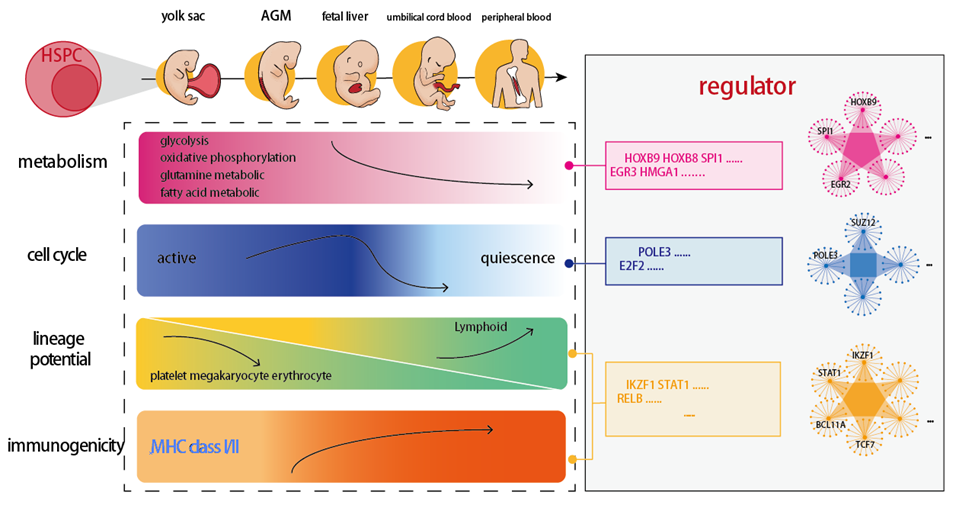
Hematopoietic Stem/Progenitor Cell (HSPC) is a stem cell population that generates the entire blood immune system of the human body, which plays a significant role in the occurrence, development and treatment of major diseases. In all stages of human development, including early embryo, birth and adulthood, HPSCs are produced in line with the characteristics of their respective developmental stages, such as multi-potential HSPCs in the yolk sac of early embryo, HSCs in the AGM stage and fetal liver, and HSCs in umbilical cord blood and bone marrow after birth. However, the potential properties and mechanisms of HSPCs at various stages of human development are still unclear, which limits the progress of human hematopoietic stem cell research.
Recently, Guangjin Pan's team at the Guangzhou Institute of Biomedicine and Health, Chinese Academy of Sciences, published a paper titled "Characterization of gene regulatory networks underlying key properties" in Cell Regeneration in human hematopoietic stem cell ontogeny ". Through the analysis of HSPCs singel cell RNA sequencing (scRNA-seq) data at different stages of human development, the research has analyzed the potential characteristics and developmental evolution of HSPCs at different stages of human development. The Gene regulatory network (GRN) and key transcription factors that control the potential and self-renewal of human HSPCs are further explored. The study also elucidated the potential characteristics of HSPCs (iHSPCs) differentiated from human induced pluripotent stem cells (hiPSCs) in vitro and enhanced the function of iHSPCs by introducing the above-mentioned key regulatory factors in the gonorrheal system. This study systematically studied the evolution of potential characteristics and the decision network during the development of human HSPCs, and provided a powerful theoretical guidance for understanding and manipulating human HSPCs.
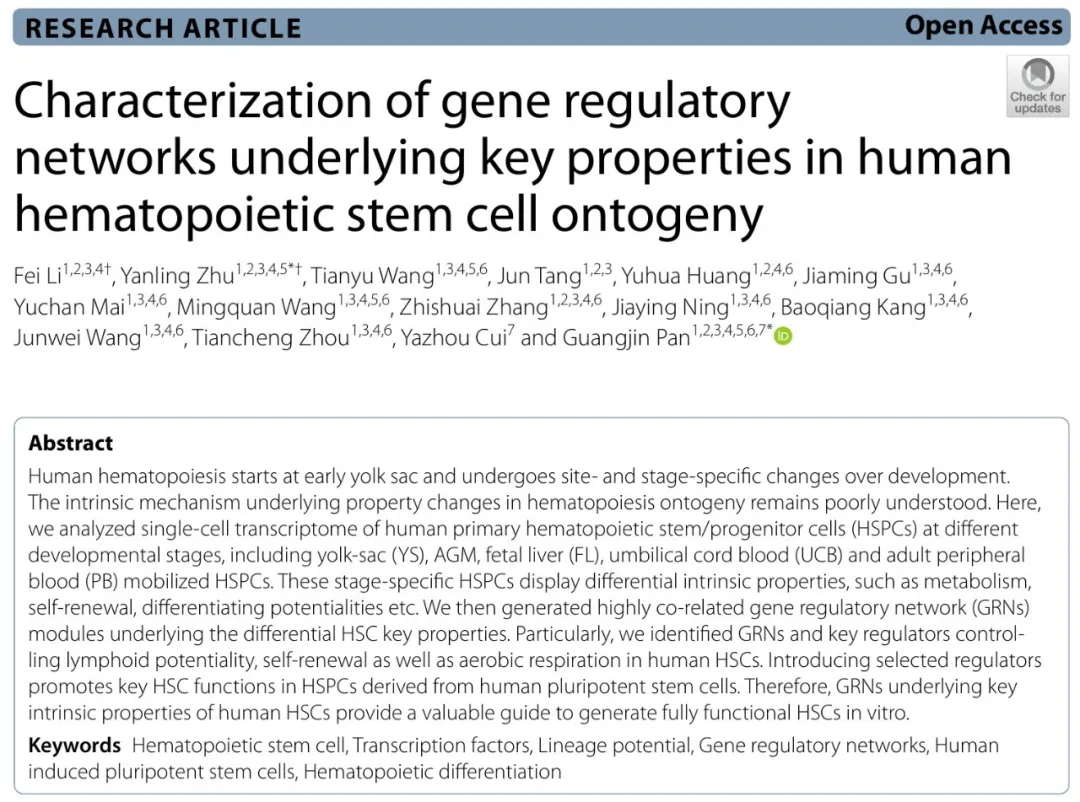
The team used stem/progenitor cells from different stages of human development, Including Yolk Sac (YS), Aorta-Gonad-Mesonephros (AGM), Fetal Liver (FL), Umbilical Cord-Blood (FL), fetal liver (FL), fetal liver (FL), umbilical cord-blood (FL), fetal liver (FL), umbilical cord-blood (FL), fetal liver (FL), fetal liver (FL), fetal sac (YS), fetal sac (YS), fetal sac (YS), fetal sac (YS), The scRNA-seq data of HSPC in UCB and Peripheral Blood (PB) after bone marrow mobilization were integrated to obtain gene profiles of HSPC at different developmental stages. Consistent with other previous studies, signature genes recognized as hematopoietic stem/progenitor cells were consistently highly expressed in all sources of HSPCS, while other markers of mature blood lineage were not expressed. Further quasi-time series analysis extracted four gene groups with expression patterns during HSPC development, which were related to metabolism, biosynthesis, lineage potential, and immune function, respectively, revealing different changes in these important biological functions during HSPC development.
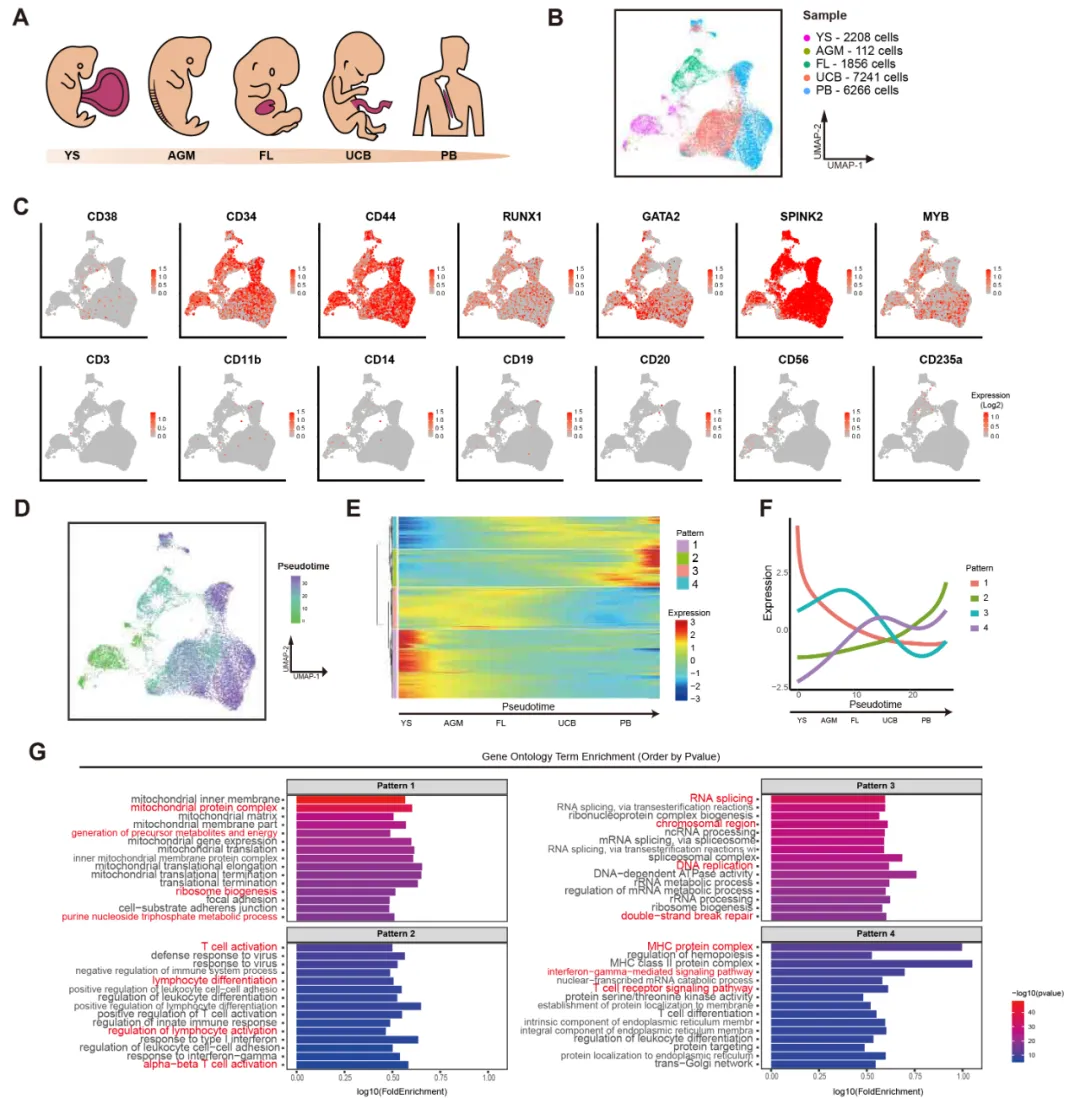
Different characteristics of HSPC in different stages of human development
The team further studied the specific metabolic characteristics of HSPCS at different stages and found that HSPCS in the embryonic period had higher metabolic activity than those in the postpartum period. This is also confirmed by the early high activity of the PI3K-AKT-mTOR and MYC pathways. The early high metabolic level may be adapted to the rapid proliferation of HSPCS during the embryonic period. With the development of UCB and PB, the metabolic type of HSPC gradually changed from oxidative phosphorylation to glycolysis, and the activity of AMPK pathway gradually increased. These changes may be related to late HSPC maintenance to resting state.
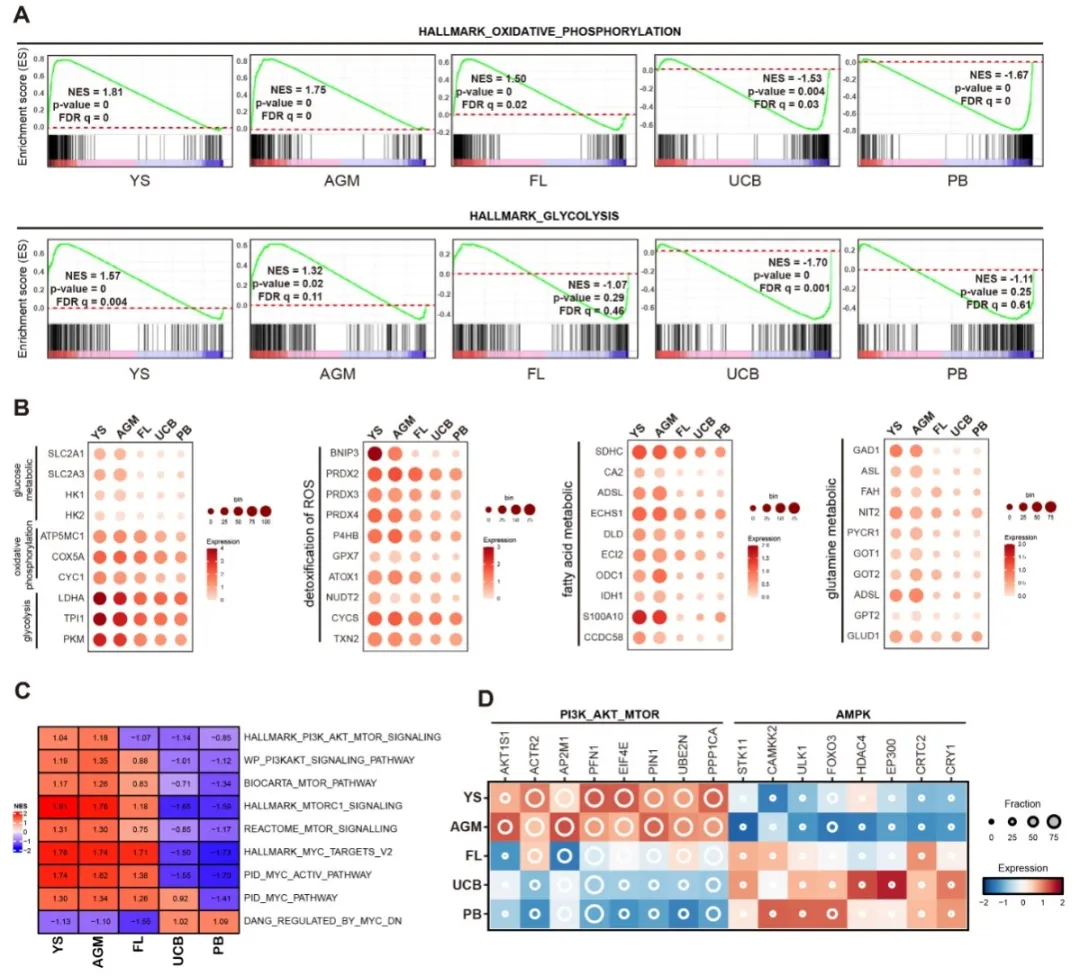
Metabolic characteristics of HSPC in different developmental stages
It was also found that HSPCS at different developmental stages had different immune lineage differentiation tendencies. The medullary potential was most prominent in HSPCS of FL and UCB, and the gonoclastic potential was most obvious in HSPCS of PB. Overall, the HSPC of UCB shows the most obvious and comprehensive HSC characteristics. In addition, human HSPCS have different immune strategies at different developmental stages. Innate immunity, represented by the RNAi pathway, was more active in early HSPCS, while adaptive immunity, represented by the interferon response, was more active in later HSPCS. MHC genes are expressed only from the HSPC of FL. In contrast, early HSPC overexpressed immune escape genes.
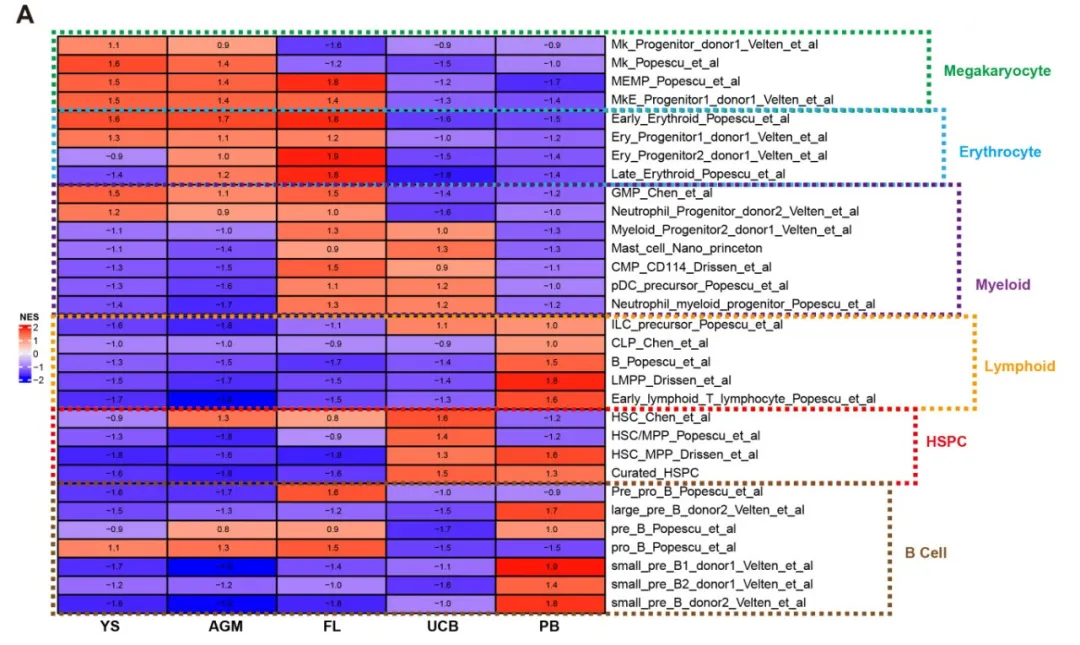
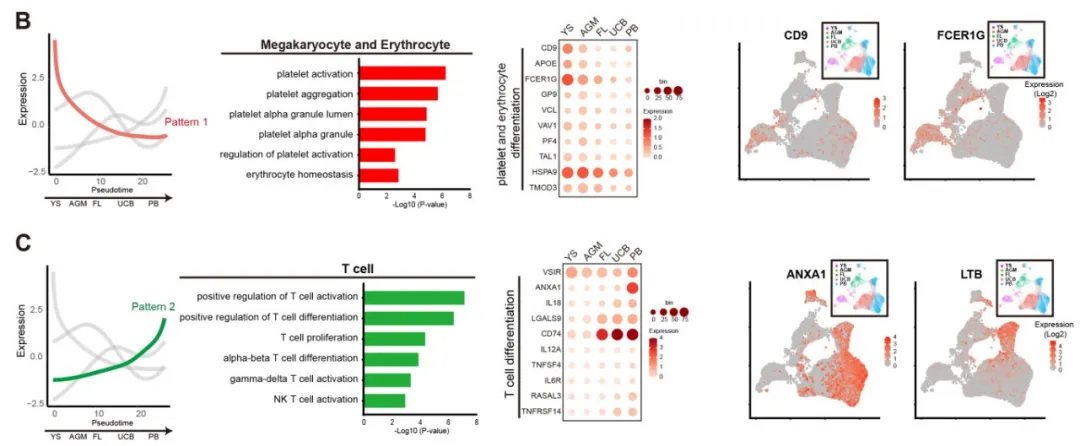
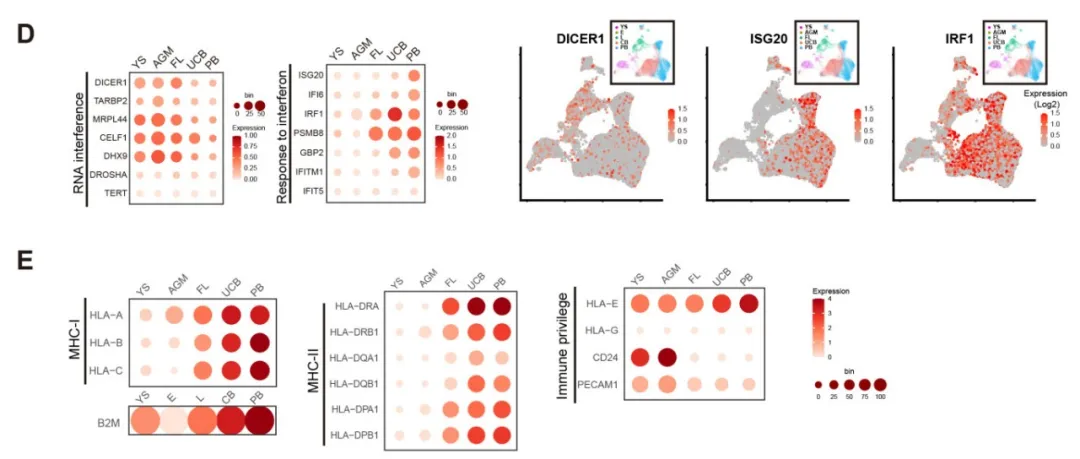
Different lineage potential of HSPC at different developmental stages
In order to further explore the regulatory network that controls the key characteristics of HSPC, the research team mapped the regulatory factors of HSPC. According to the similarity, the 6 regulatory factor modules regulate different functions respectively, and it is found that different regulatory modules show different activities in different stages of HSPC. Among them, the self-renewal ability of HSC is mainly regulated by module 4. FL's HSPC has the strongest module 4 activity, indicating the strongest self-renewal ability. Module 5 mainly regulates oxygen response and metabolism, which is consistent with previous conclusions, and has strong HSPC activity in early development. The potential of shower system is closely related to the maturation of HSPC, which is mainly regulated by module 3.
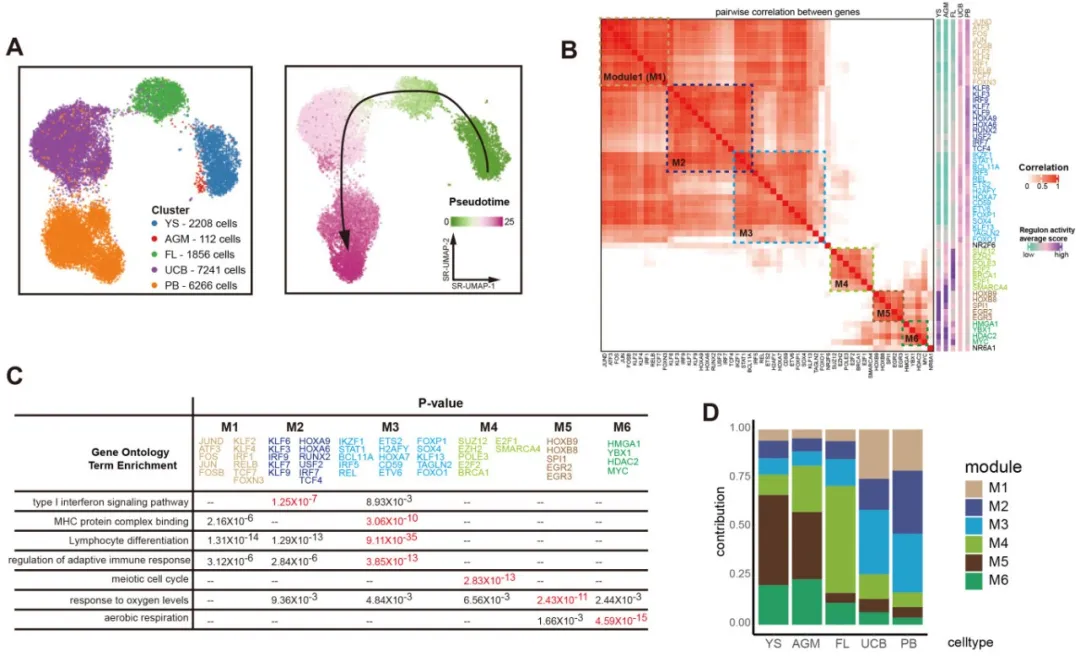
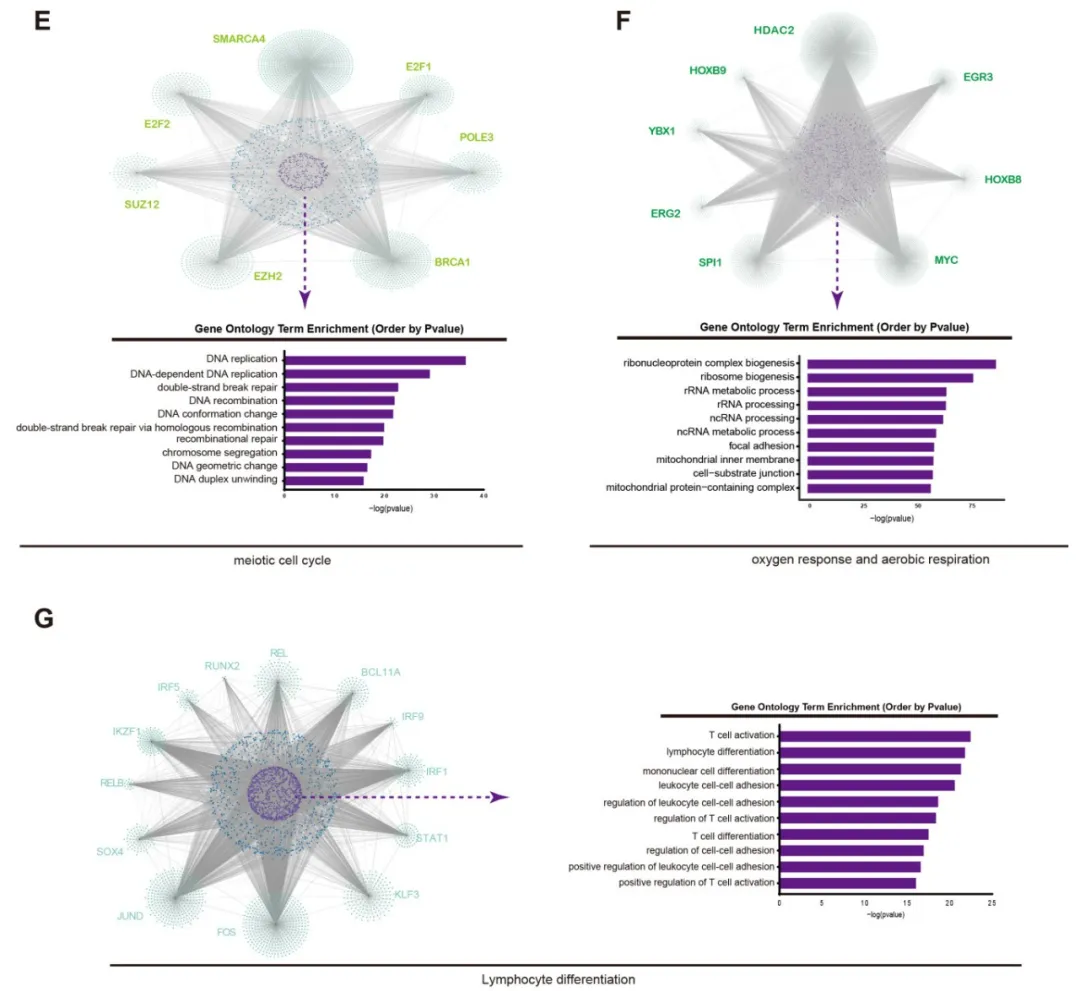
Gene regulatory network regulates HSPC differential characteristics
The research team has previously successfully differentiated human iPSCs into IHSPCs with multidirectional differentiation potential. To further optimize the in vitro differentiation of these IHSPCs, we combined the RNA-SEQ data from IHSPCs with in vivo source HSPCS. It was found that iHSPC was more similar to early HSPC in all functions, especially its differentiation potential showed higher erythroid/megakaryocyte potential and lower lymphatic potential.
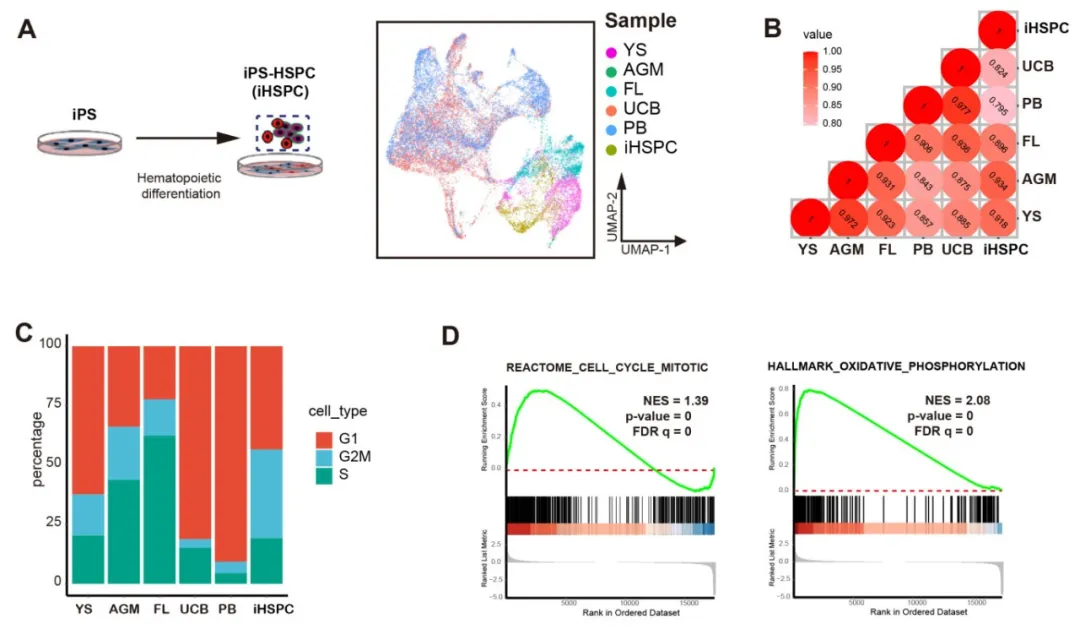
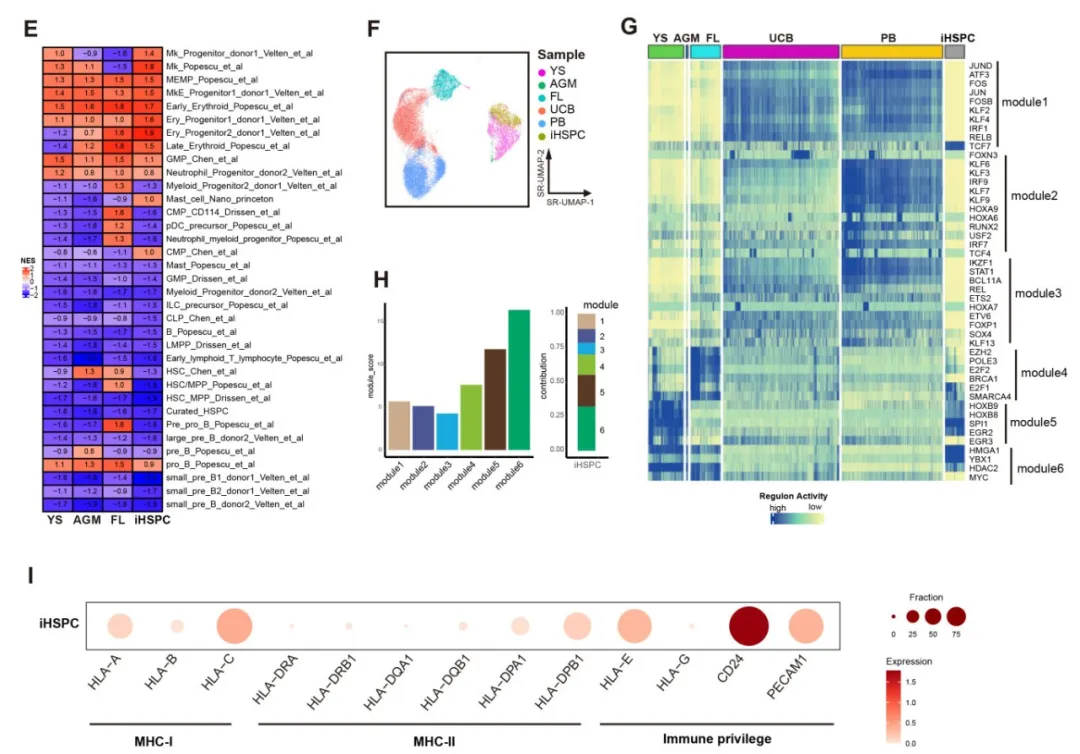
iHSPC is more similar to early developmental HSPC
Based on the insufficient potential of iHSPC, the researchers further explored whether the function of iHSPC could be improved by regulating the key regulatory factors selected above. Overexpressed iPSCs cell lines were constructed by choosing 6 TFS that were related to the function of the gonorph and had low expression in IHSPCs, and successfully differentiated into TF-overexpressed IHSPCs. Subsequently, the gonogenic differentiation potential of these IHSPCs was examined by co-differentiation with stromal cells, and it was found that IHSPCs overexpressing FOS, IKZF1 and KLF9 could promote the generation of NK cells and T cells. The above experimental results verified the effect of leucopotential-related TF screened by gene regulatory network on enhancing the leucodifferentiation ability of HSPC.
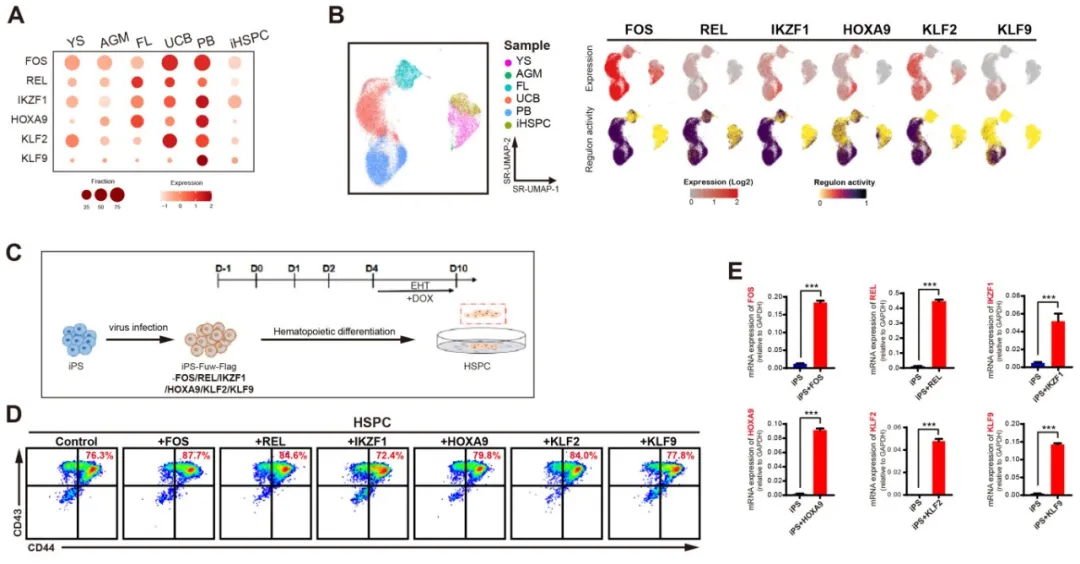
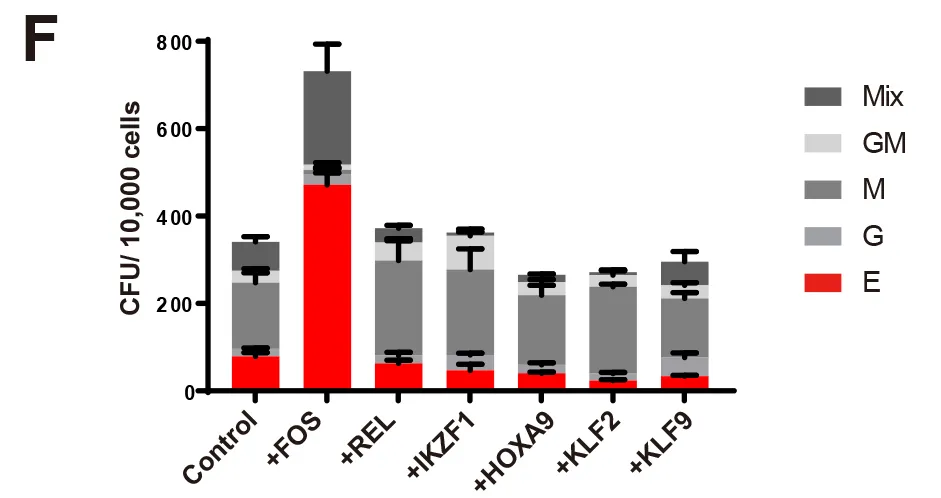
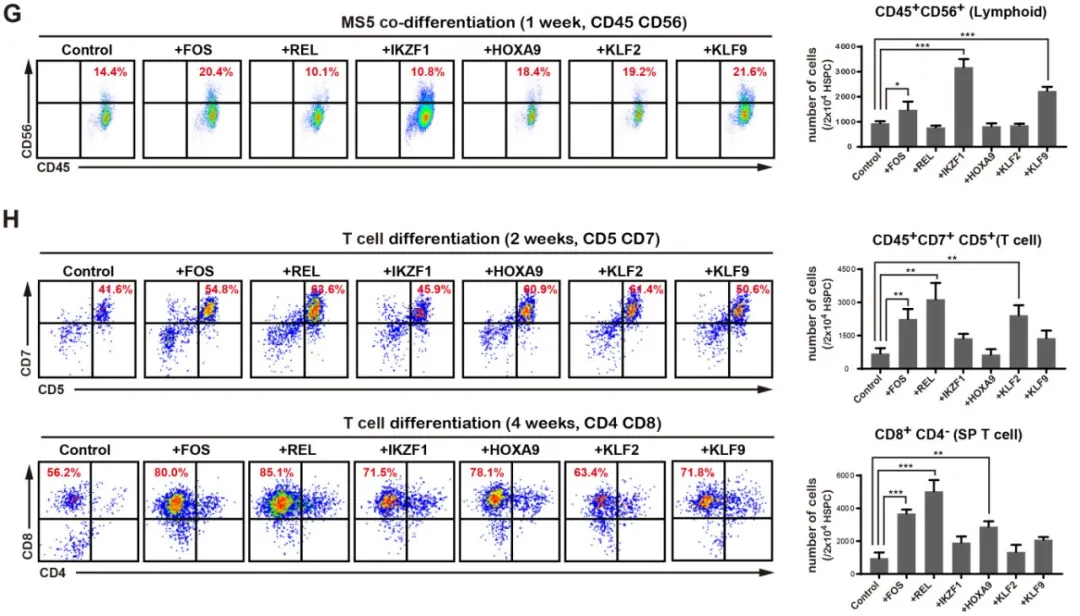
The expression of key TF improves the function of iHSPC
In summary, the study analyzed the dynamic change maps of various characteristics of HSPC at different developmental stages, including metabolic characteristics and differentiation potential, and described the potential regulatory network behind these key characteristics. More significantly, the mapped regulatory network can provide theoretical support for the further completion of iHSPC functions.
Cite this article:
Li, F., Zhu, Y., Wang, T. et al. Characterization of gene regulatory networks underlying key properties in human hematopoietic stem cell ontogeny. Cell Regen 13, 9 (2024). https://doi.org/10.1186/s13619-024-00192-z
Corresponding author:
Pan Guangjin is a researcher at the Guangzhou Institute of Biomedicine and Health, Chinese Academy of Sciences. The main goal of Pan Guangjin's team is to study the fate transformation regulation of human pluripotent stem cells and efficiently obtain functional cells with potential application value. The relevant research results have been published as corresponding (including co-authors) in Nature Methods, Cell Stem Cell, Nature Communication and other internationally renowned journals.